Shamkir 2019 Round 5: Anand shows Dada'Giri', scores his first classical win against Anish
Vishy Anand and Anish Giri have played 18 classical games against each other in the past. Their rivalry began in 2011 when 17-year-old Anish was taking on the World Champion Vishy at Wijk Aan Zee. Since then they have played at numerous events, including the Candidates in 2016, but Anand was never able to beat Anish in a classical encounter. Giri, on the other hand, had already scored two victories at Bilbao Grand Slam in 2015 and Norway Chess in 2017. These were the statistics until 4th of April 2019. That's the day when the 5th round of the Shamkir Masters 2019 took place and Vishy Anand scored his first classical win against Giri in dominating style! Hence the title Anand shows Dada'Giri' which translates to Anand showing his dominance on the board!
These couple of photos taken by Amruta Mokal show us the friendship that is shared by Anand and Giri:
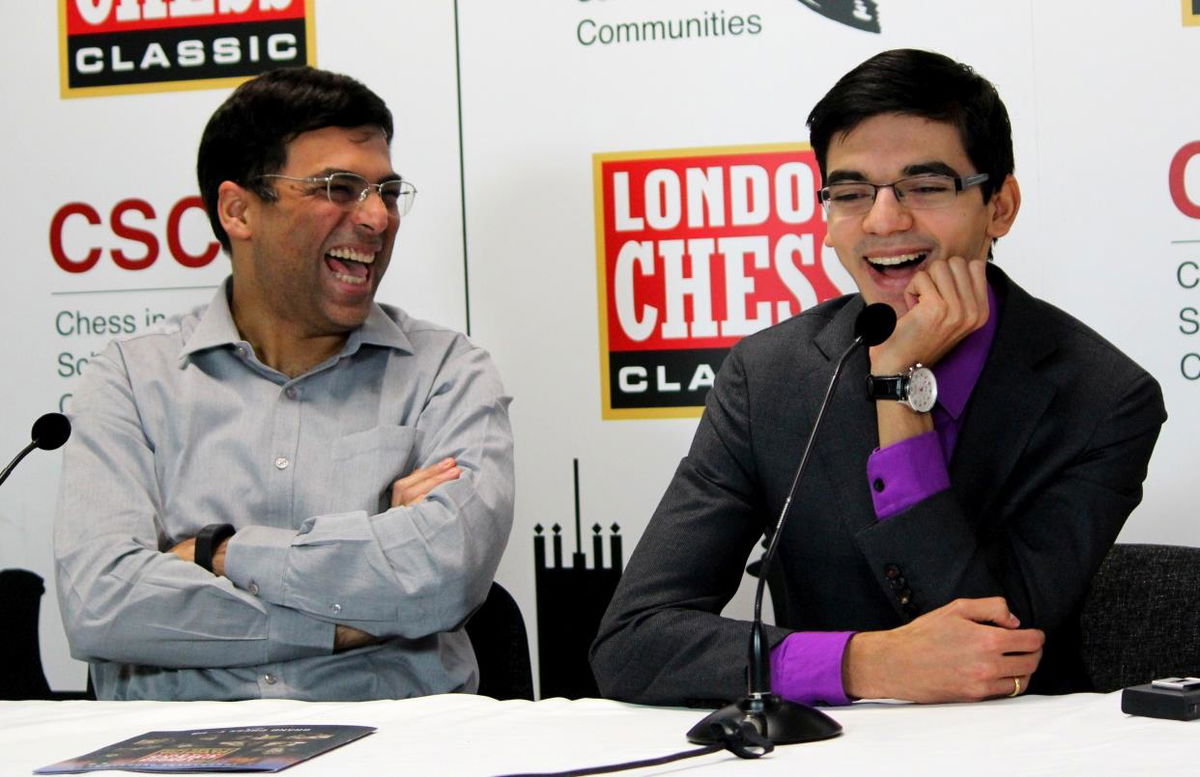
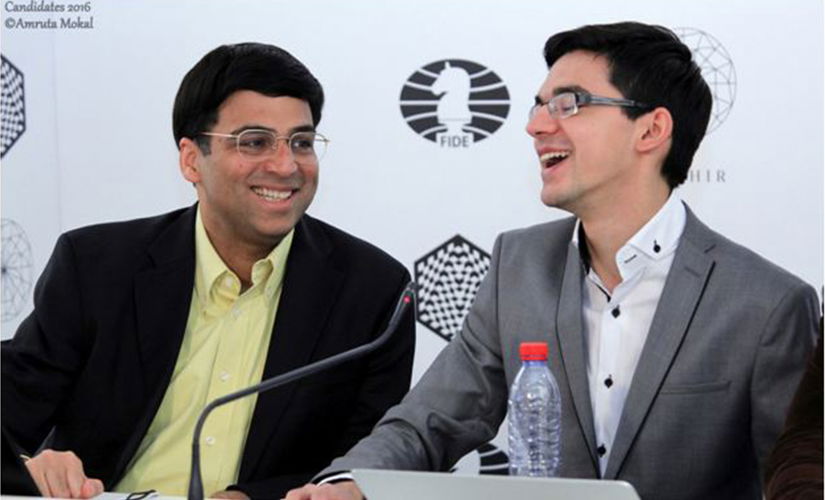
But when they sit across the board....
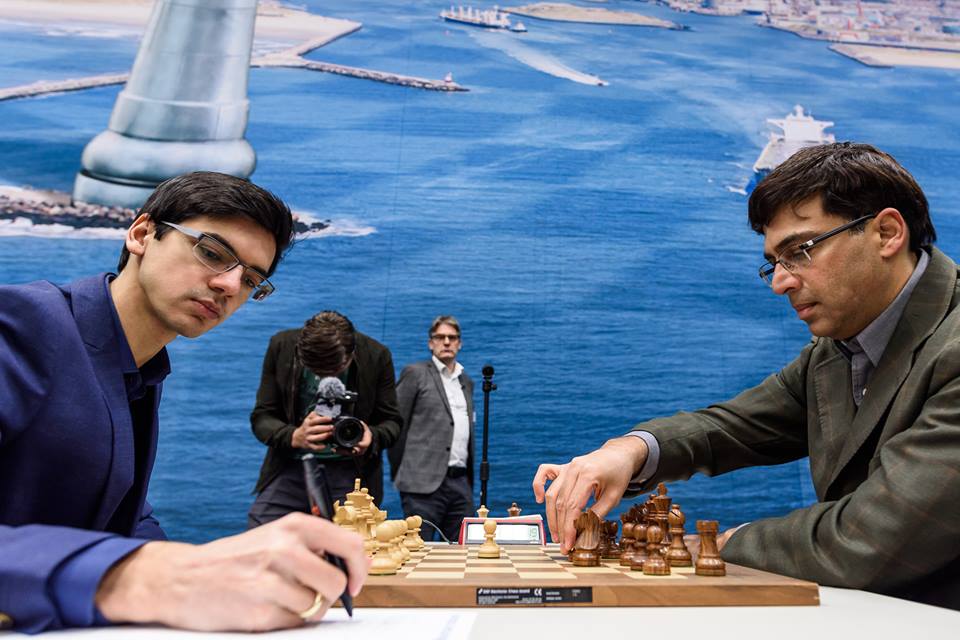
Anish grew up in an era where Vishy dominated the world of chess. In fact when Giri was a young boy, ChessBase co-founder Frederic Friedel took him to Anand's training camp for one of the World Championship Matches. In 2011 when Anish sat across Vishy he had a rating of 2686 while Anand was 2810. Today, Giri is the higher rated player, has a +2 score against Anand and Vishy has never beaten him in a classical game! This just goes to show how talented and strong Anish really is.

Anand - Giri:
Anish Giri isn’t having a great tournament by his standards, currently standing at the last position. However, it is rather foolish to play against such a player just by looking at the table. Quality is quality, and Anish is a super strong GM, who had just had some bad luck in this tournament. Vishy Anand, on the other hand, has been turning back the clock this tournament, with some inspired chess, so this encounter in my eyes was rather crucial for both players. Will Anand use this game as a stepping stone to get closer to Carlsen, or will Giri finally get the win he deserves?
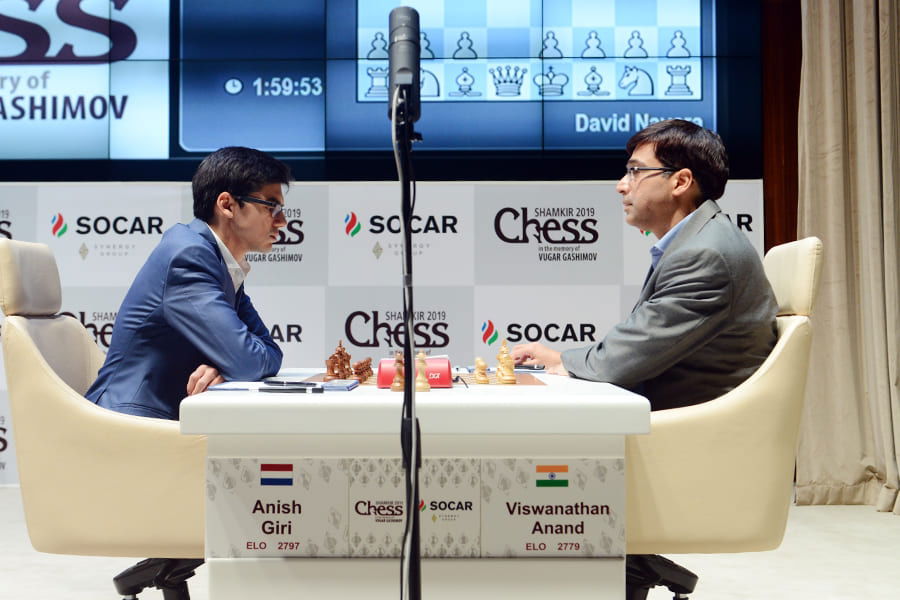

Anand went for 4.d3 against the Berlin today, followed up by c3 and Nbd2. All white is trying to do in these lines is get a complex game with chances to outplay the opponent. Players nowadays focus more on getting the opponent out of their comfort zone with imbalances, which is what Vishy was trying.
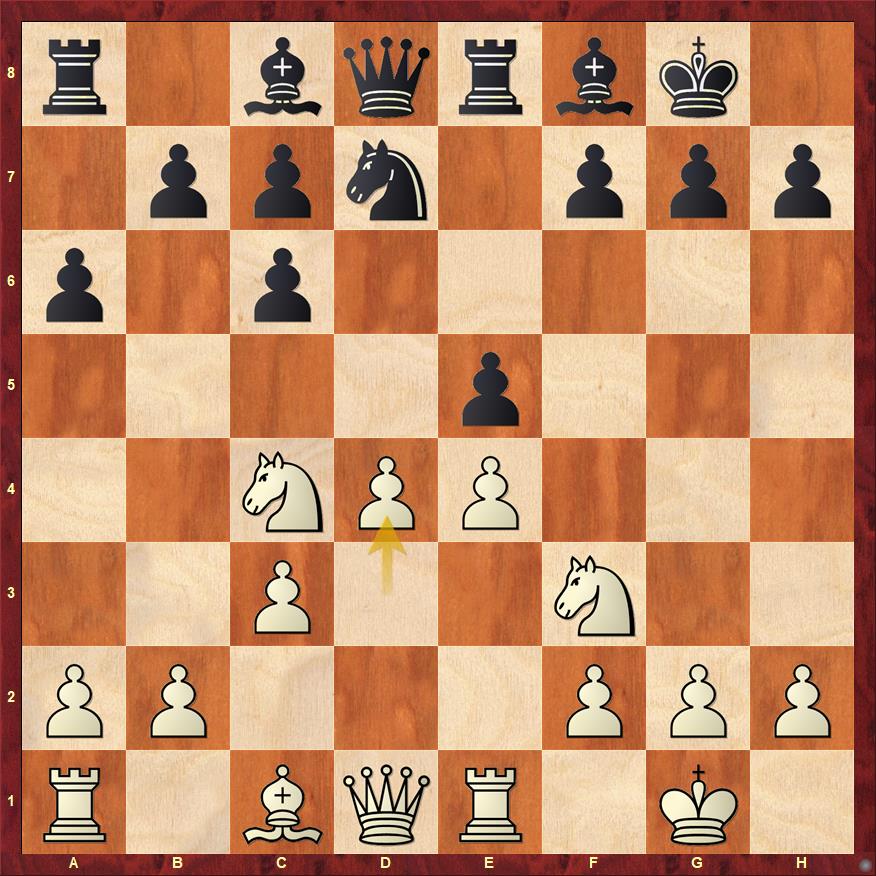
The contours of the game are clearly set now, after Vishy’s 11.d4. He will hope to slowly advance his pawn mass in the center and asphyxiate his opponent, while Giri will try to exchange pieces and go into the endgame where the Bishop pair should dominate in an open position, With such radically different goals, we would definitely be watching a very difficult struggle.
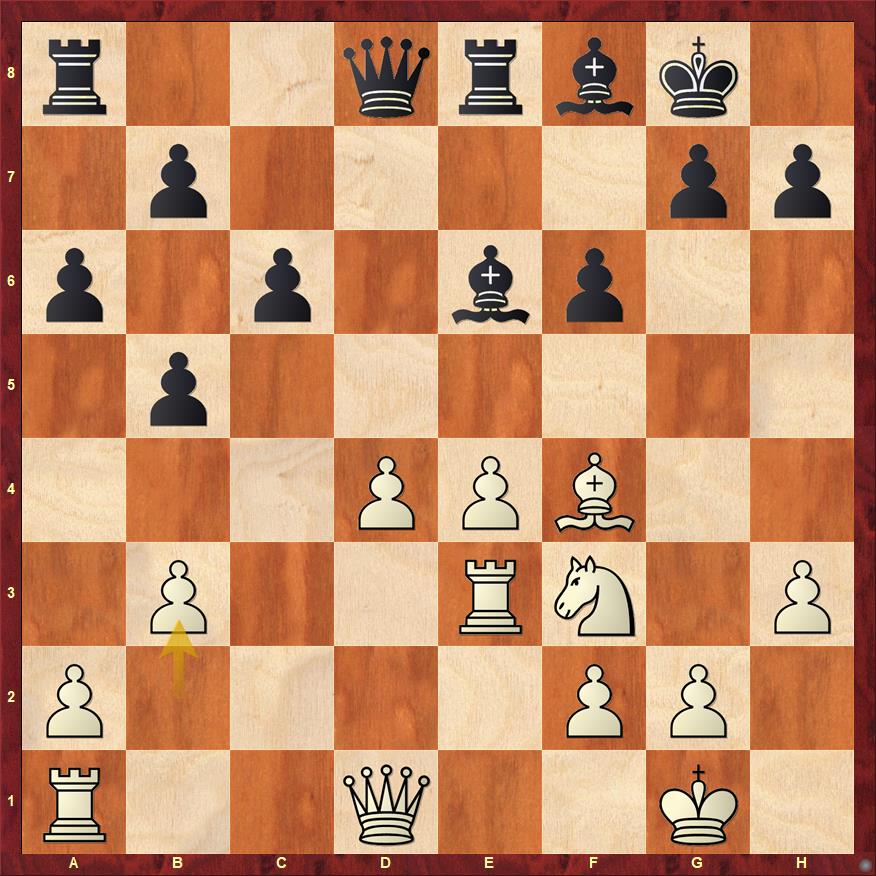
Both players have nearly completed their opening phase, and have gotten closer to their goals. Black has exchanged a pair of knights, which has gotten him closer to full equality. Anand’s previous move Re3 was not a rook lift intended to attack the king. It was a rook lift meant to retain flexibility about doubling rooks on either central file. His 17.b3! is a very strong idea. Normally, you don’t want to create targets for your opponents on the side you are weaker in. Anand, however, is playing on the whole board, restricting to the maximum the opponent’s unopposed light squared Bishop.
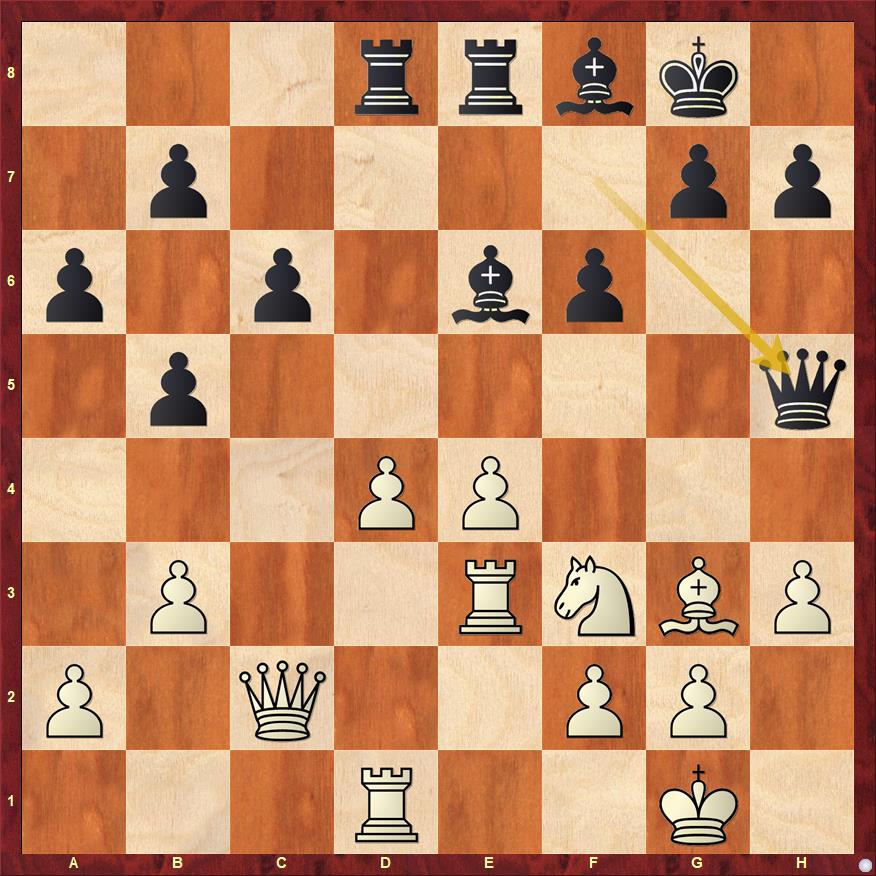
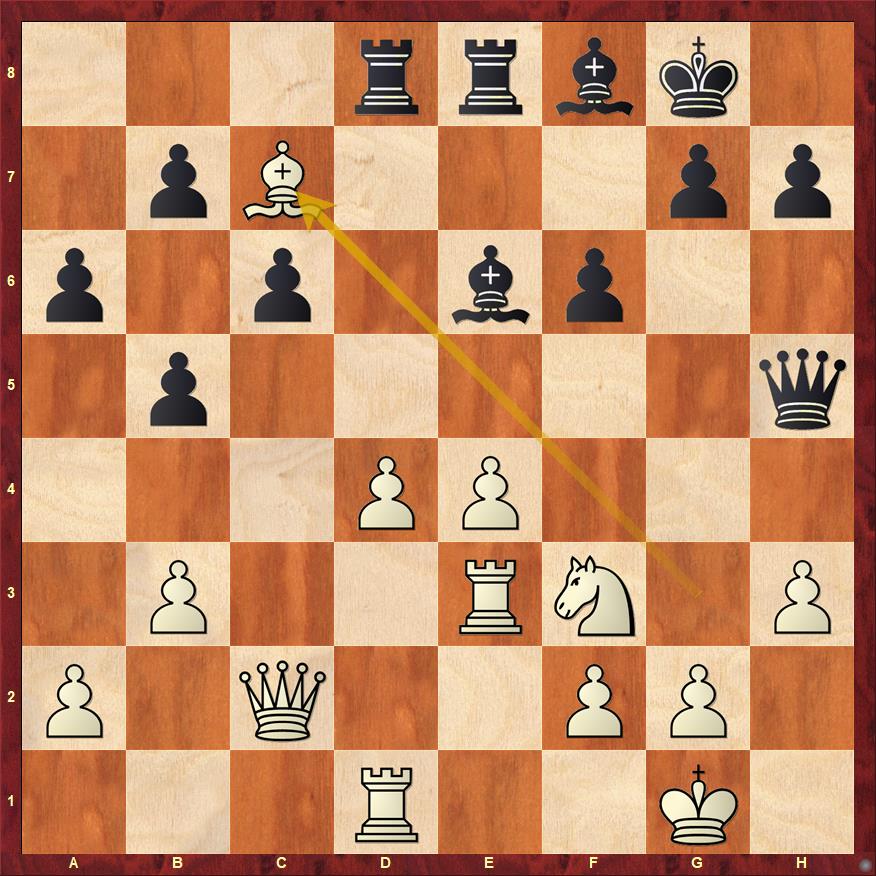
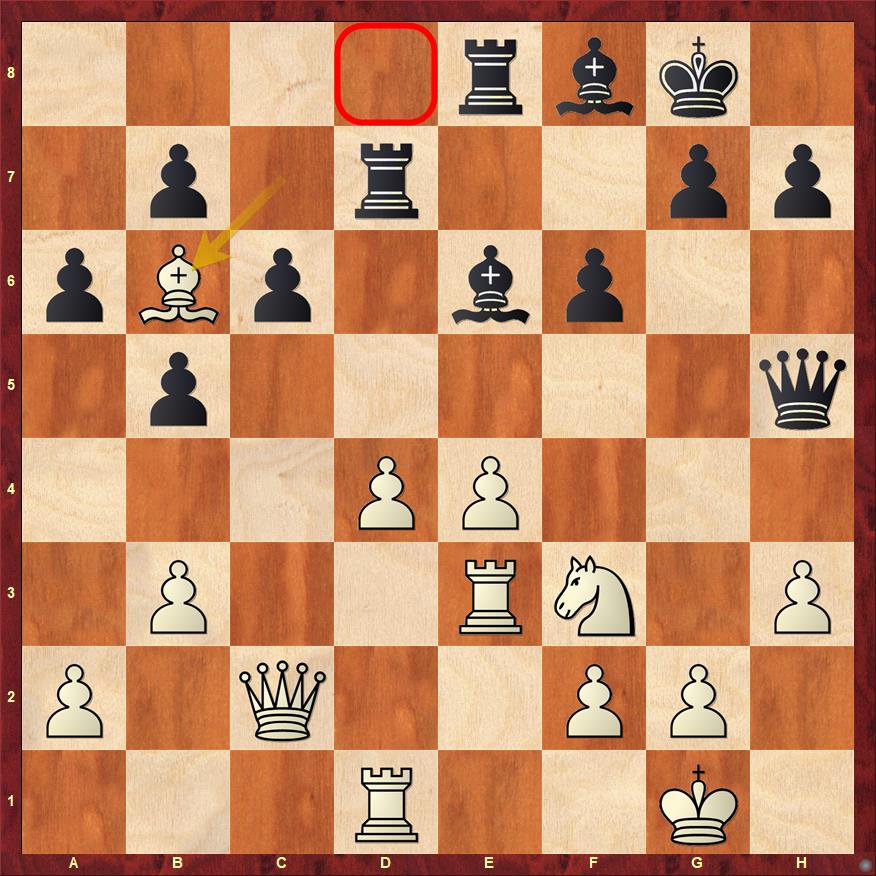
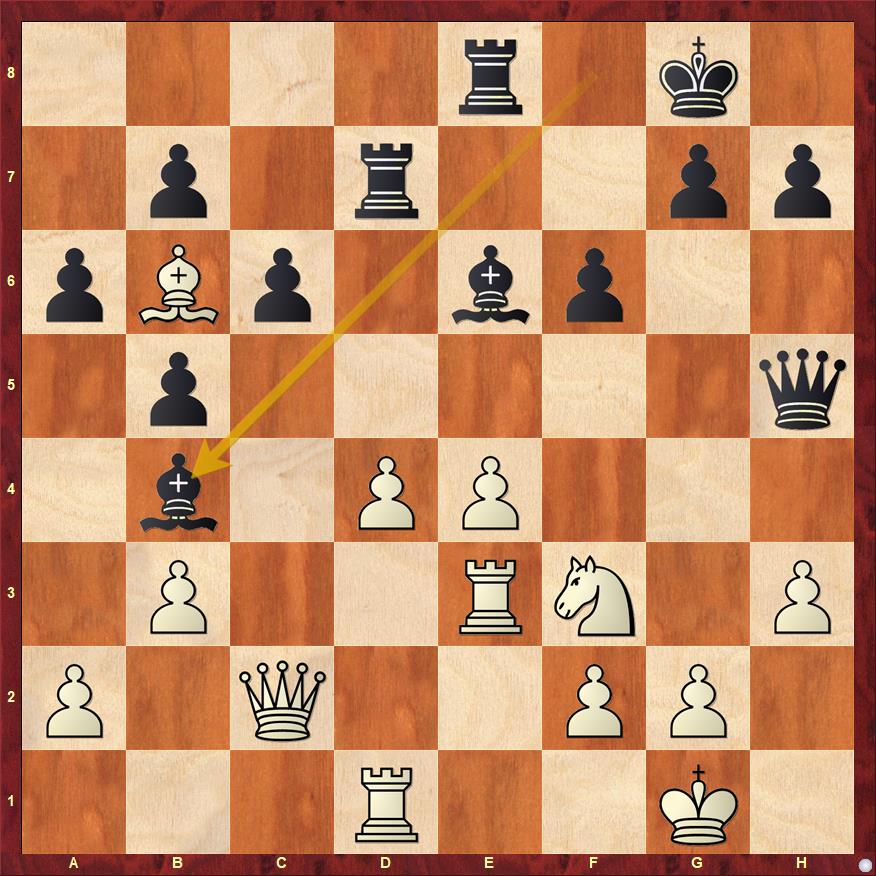
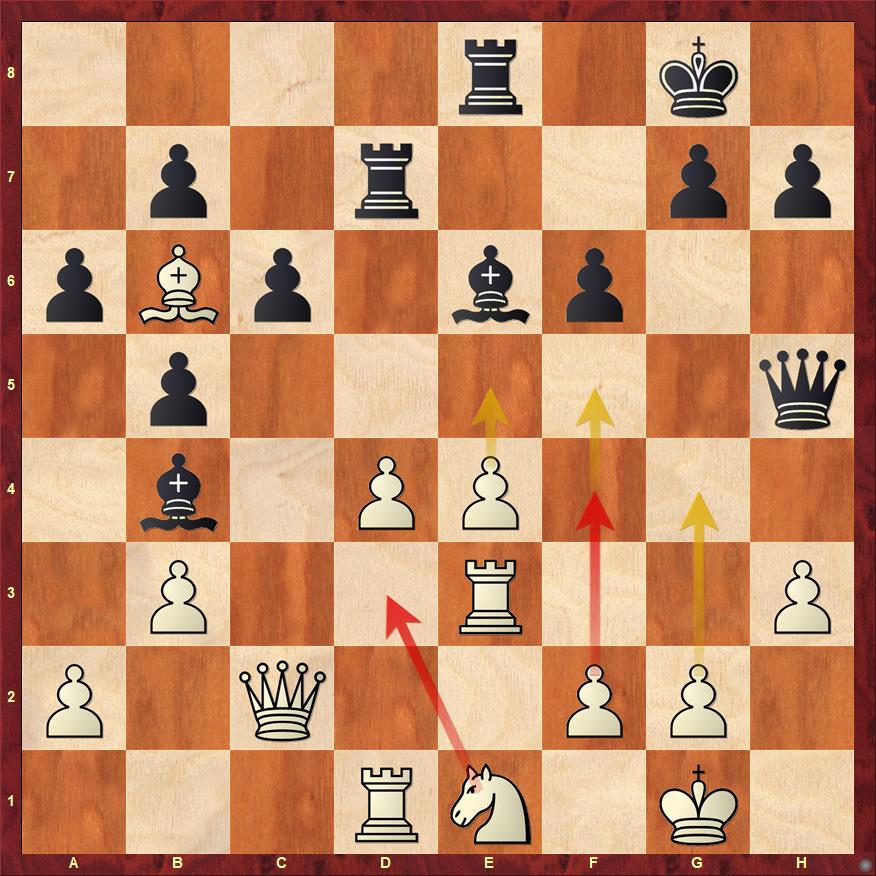
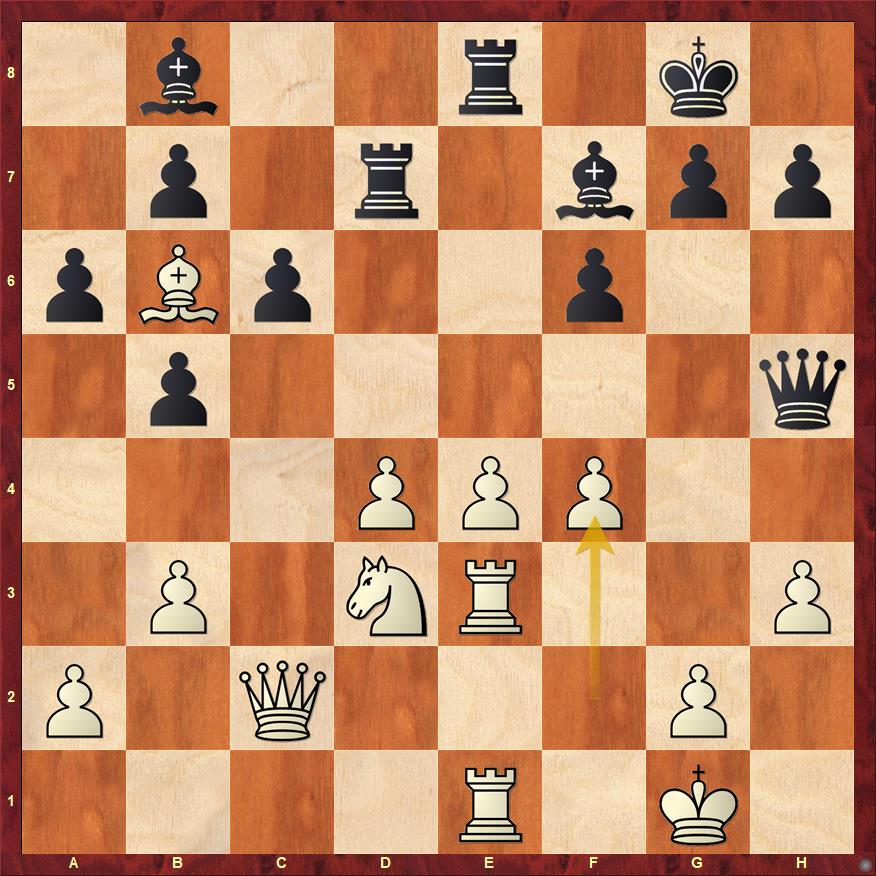
Anand’s foresight can be truly appreciated only after carefully studying the position after his move f4. As mentioned, the Bishop on b4 has been driven back with a gain of tempo. The knight on d3 supports the pawn advance f4, and is eying the e5 square in case Anish decides to lash out at the center. The rooks are harmoniously doubled on the e-file, and the Queen is ready to support further expansion on e5. All black has done in the meantime is shuffle his pieces to the last few ranks, the Queen being the lone ranger stranded on h5, asking to be kicked back to the back rank after g4. It is clear to me now, that Anand has masterfully manipulated the position to his favour.

An example of something that glitters, but isn’t gold. Anish has optically improved his position here, with the rook on the second rank, and the light squared bishop finally activated to the long diagonal on d5. However, now notice the Bishop on b6. The piece farthest away from the action is performing the most crucial role by not allowing Black to double on the d-file.

Black has gotten rather desperate here, trying to bring his queen to the back rank, and lashing out with h5?! in a valiant attempt to generate play. Anand’s superb Kg3! here dispels all illusions. Black’s queen remains the sole attacking piece, lacking support and targets, and while along with the bishop it controls the long diagonal, it lacks any penetrative squares. The battle now ends soon enough. Anand successfully consolidates and punishes Giri for the weakening h5.
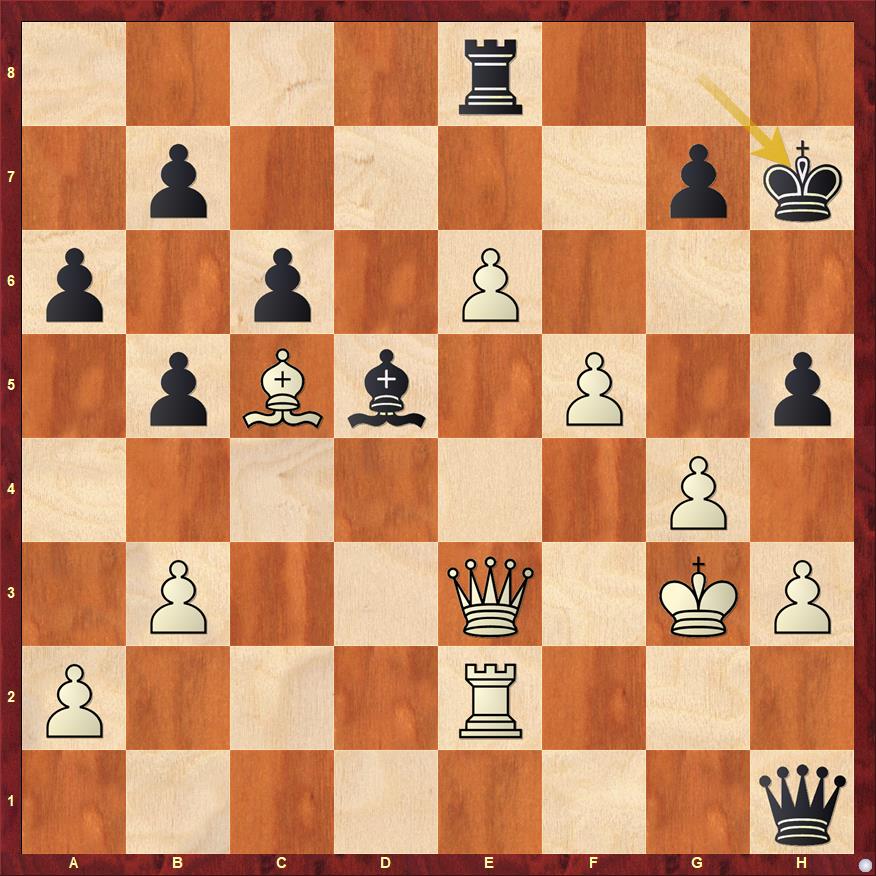
When one runs out of useful moves, he tends to blunder the game away. Here, Giri did exactly that, with Kh7? resigning abruptly after Qg5!, where heavy material losses are unavoidable. A masterclass in domination and space advantage by Vishy Anand, who managed to outplay a super strong GM with a series of excellent moves and plans. Anand was just too good today, and handled the imbalances a lot better than Anish.
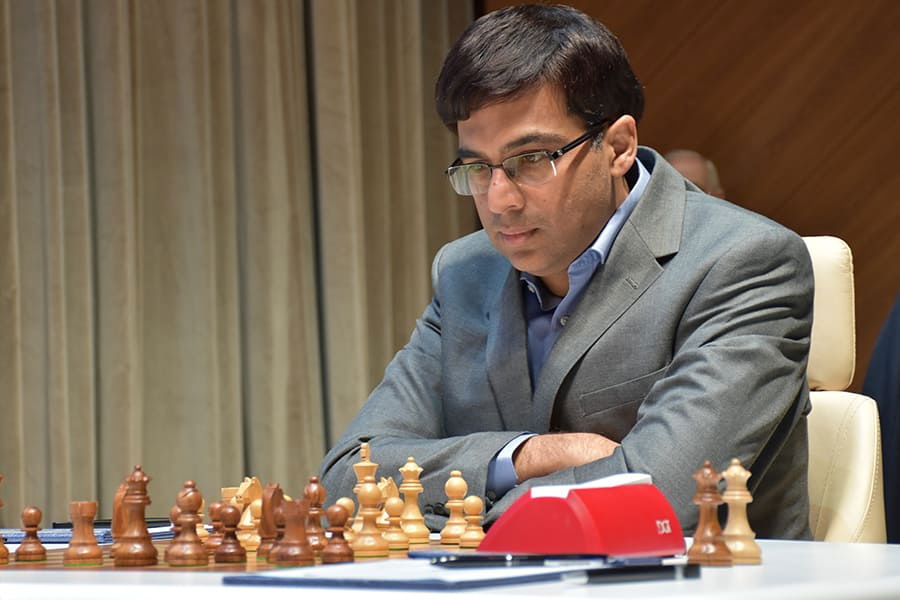
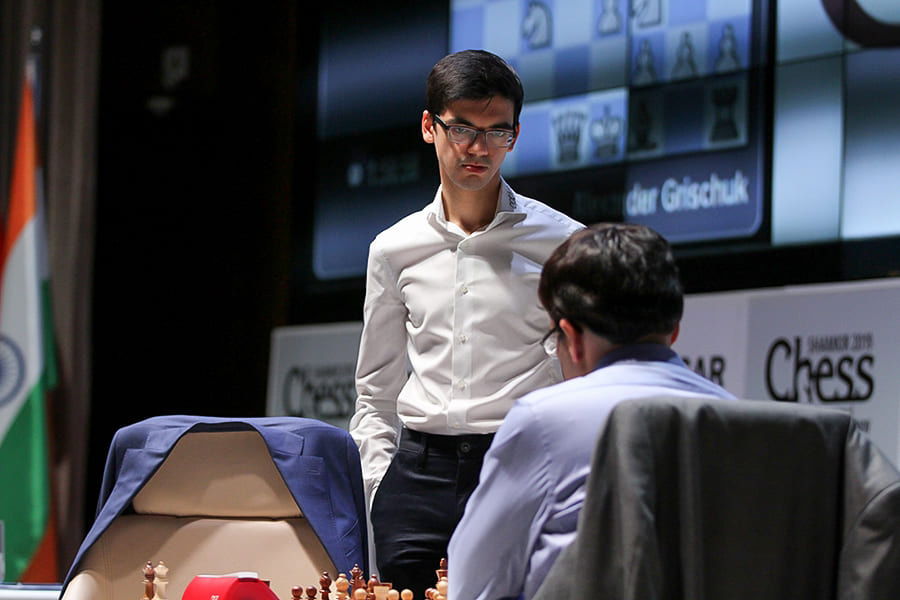
A tough loss for Giri today, but as always he was jovial in the post-game conference.
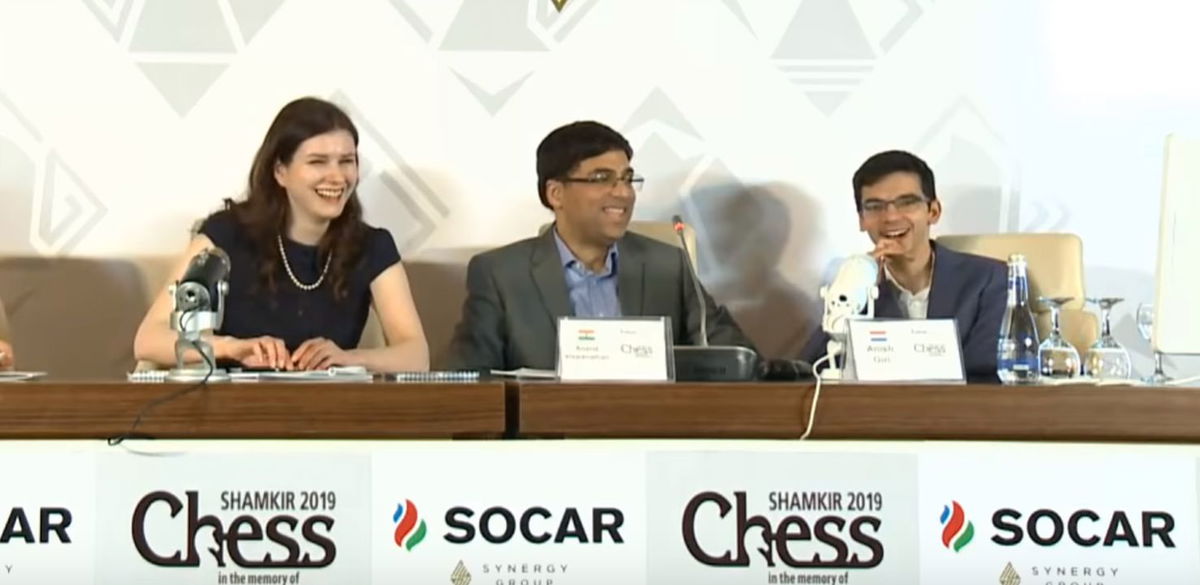
Interviewer to Anand: You are many times World Champion and the players who started with you are not even playing anymore. What do you think, this is the indicator of your labour or talent?
While Anand is thinking of his reply, Anish in his typical style says, "Both!" Once he says it everyone including Anand starts to laugh! One has to give it up to Anish for his sense of humour. In spite of losing the game, he was sporting enough to joke around.
Grischuk-Topalov:
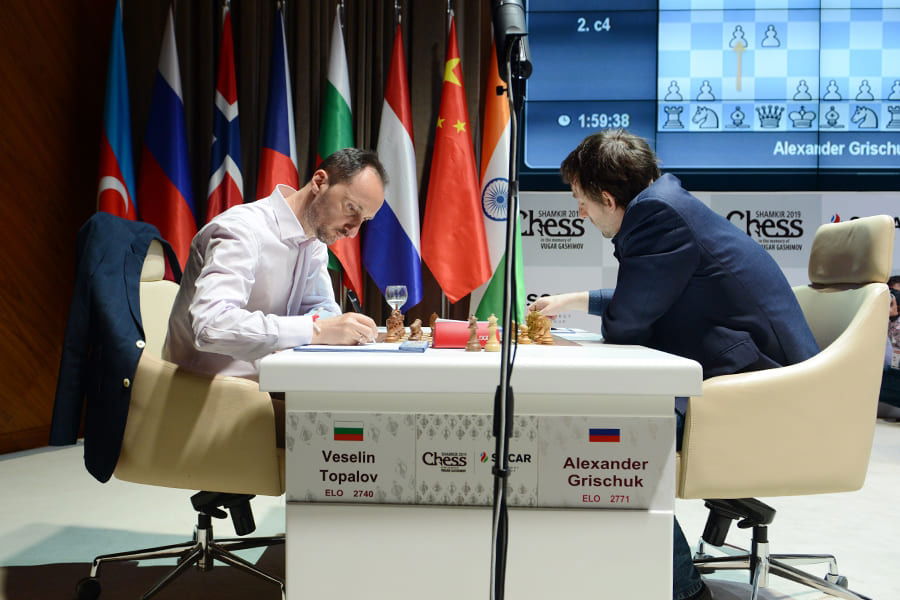
These two have known each other a long time – Sasha debuted in the World Championship cycle in 2000, while Topalov started his domination on World Chess in the early 2000s, culminating in his triumph at San Luis 2005. This game saw the younger master outdo his more experienced colleague. In a 5.Bf4 Queens Gambit Declined, Sasha didn’t achieve much out of the opening, but got the Bishop pair as early as move 14. An inaccuracy from Veselin resulted in another bishop for knight exchange, meaning that Sasha now had the two bishops against the two knights, with queens on the board. He masterfully handled this advantage to convert a fine strategic game into a confidence-boosting win. A closer look:
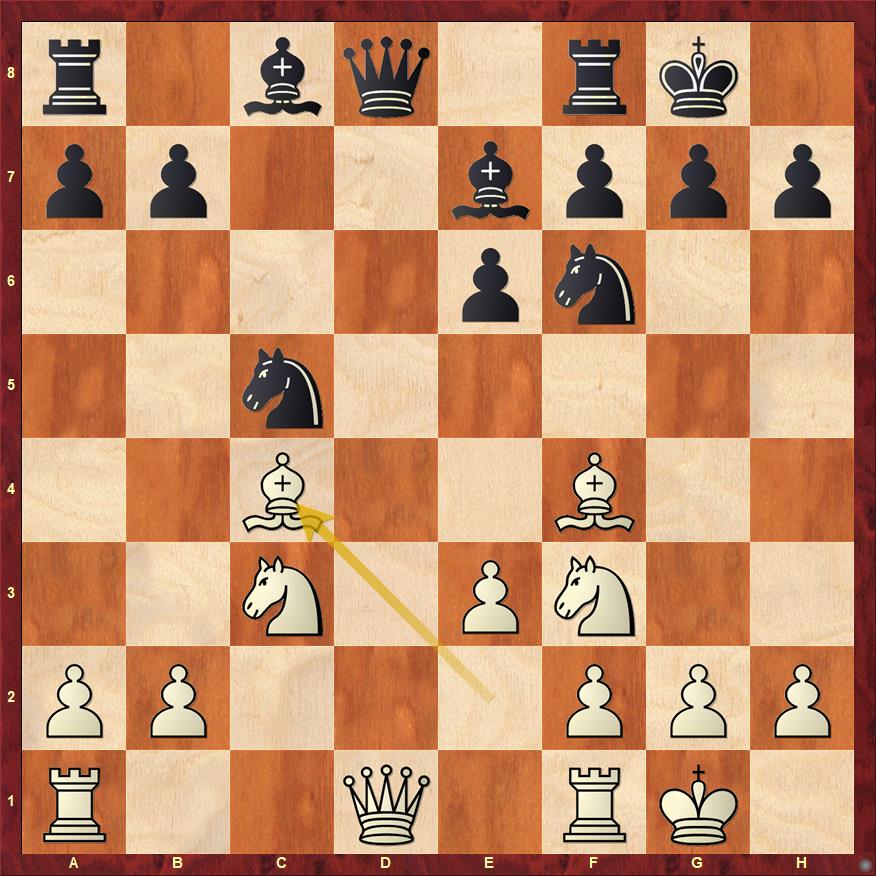
In this rather innocuous looking opening are hidden some finer details. Black has come really close to equalising here but faces some problems developing his queenside. A queen exchange usually reduces the brunt of White’s initiative, but as Gajewski has masterfully shown in the recent past, Black can’t hope to equalise so easily. It is no surprise then that Veselin deviates with 10…b6, a novelty and a rather logical move.
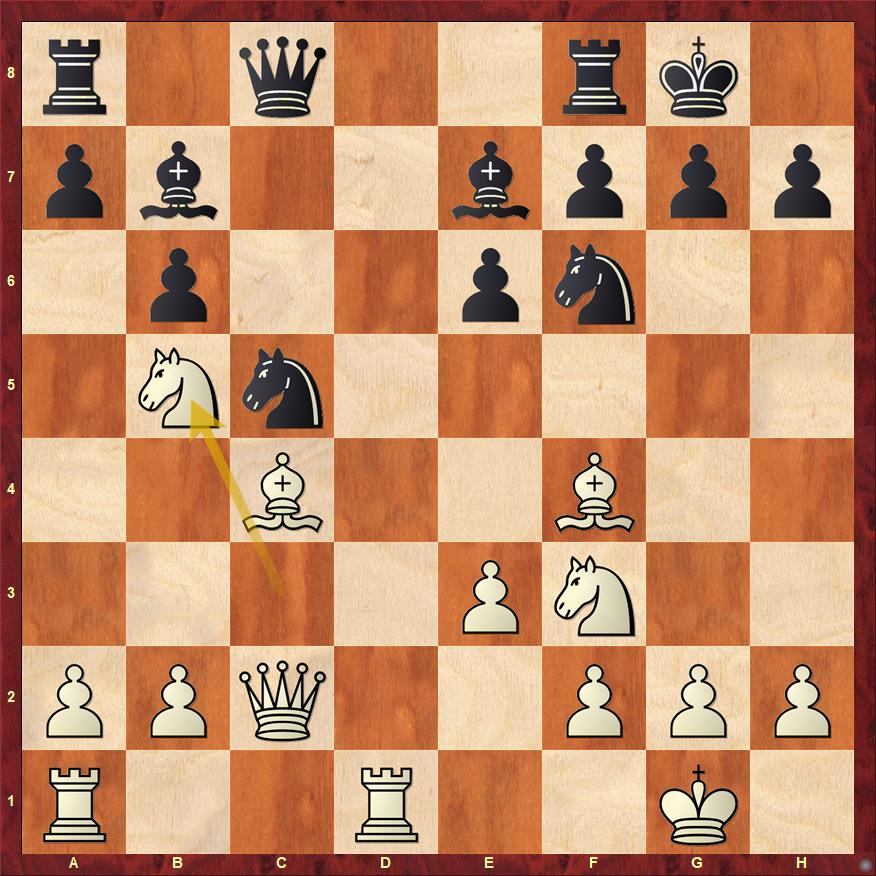
White has brought his knight up the board in what appears to me as the last throw of the dice to get an opening advantage, and he succeeds! Veselin commits the first inaccuracy here, and plays a6, allowing White to win the Bishop pair after Nd6! The position is still around equal, but White now has at least something to play with. Instead of the game move, Black equalises rather easily with Rd8! exchanging a pair of rooks and preventing White from gaining a long term advantage that easily. This improvement should ensure the longevity of Veselin’s novelty for Black, and White has to come up with something else if he still hopes to win games in this line.
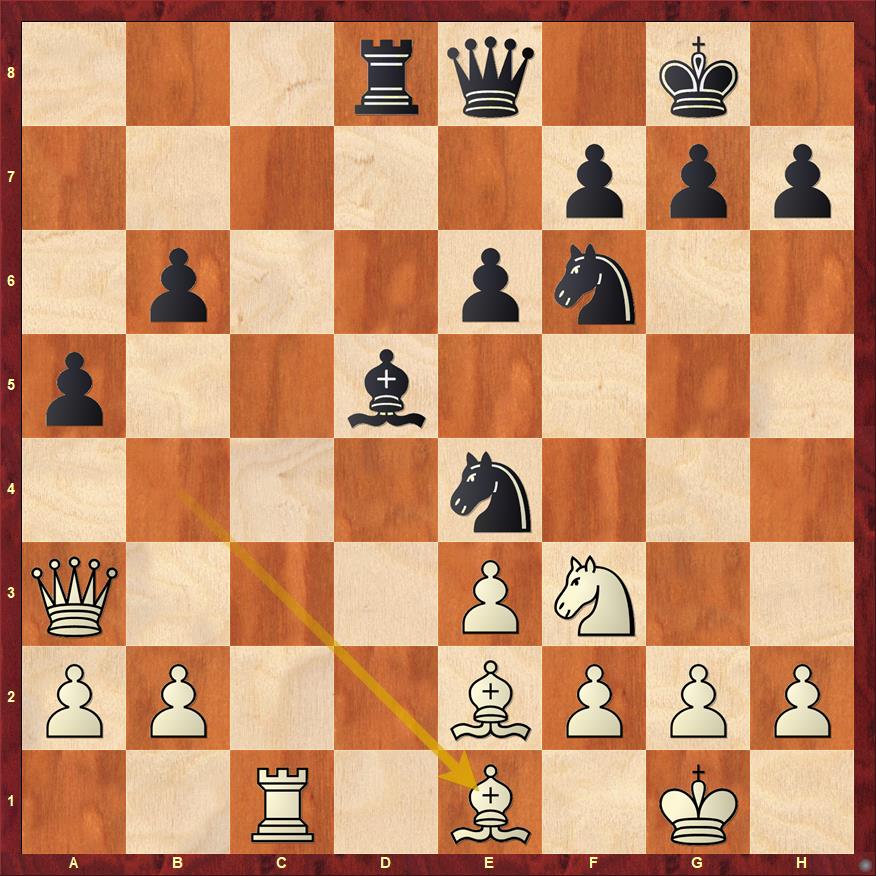
Grischuk has managed to keep the bishop pair alive, and must have still hoped to capitalise on this advantage through the late middlegame stages. However, his advantage could have altogether disappeared after the accurate e5! here from Veselin. Black controls the centre well enough now and his strong Bishop on d5 combined with better central control should ensure easy equality. After his game move h6?! however, things suddenly turn difficult. The rest of the game is annotated in detail below. The following is a classic lesson on technical conversion of an advantage, the hardest thing to do in chess.
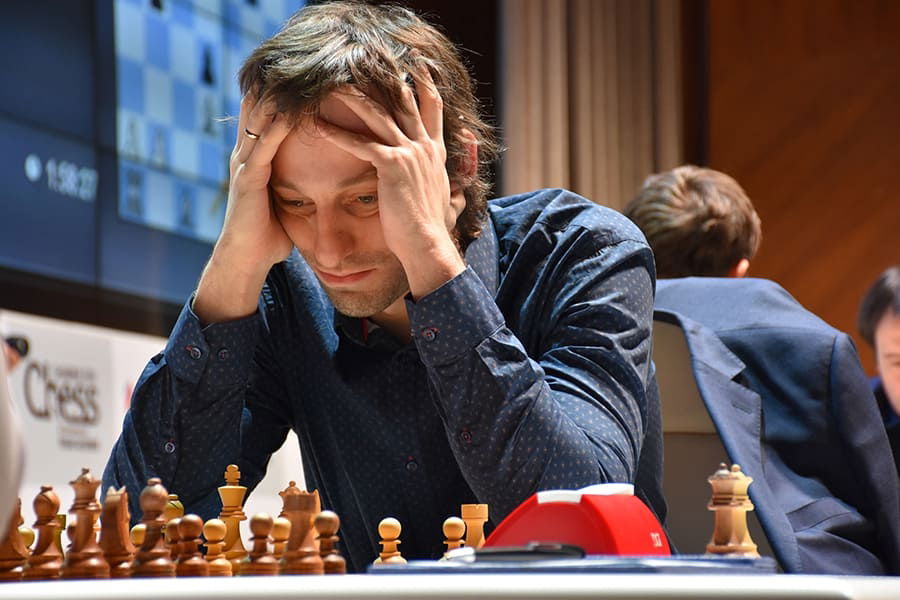
Navara – Ding Liren :
A Meran Slav main line appeared on the board, which was a surprise to me at least, since the line hasn’t been seen at the top level in some time. Navara had in store a couple of brilliant pawn sacrifices, to force play into a really complex endgame, where he managed to outplay the Chinese in a really fascinating encounter. Again, we witnessed an equal game decided by better play, a really satisfying outcome. Under the surface now:
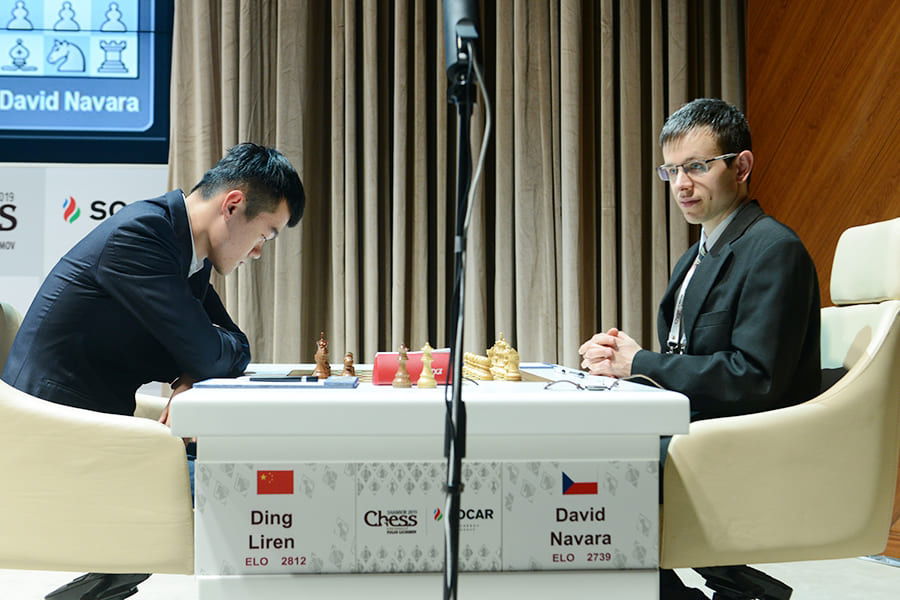
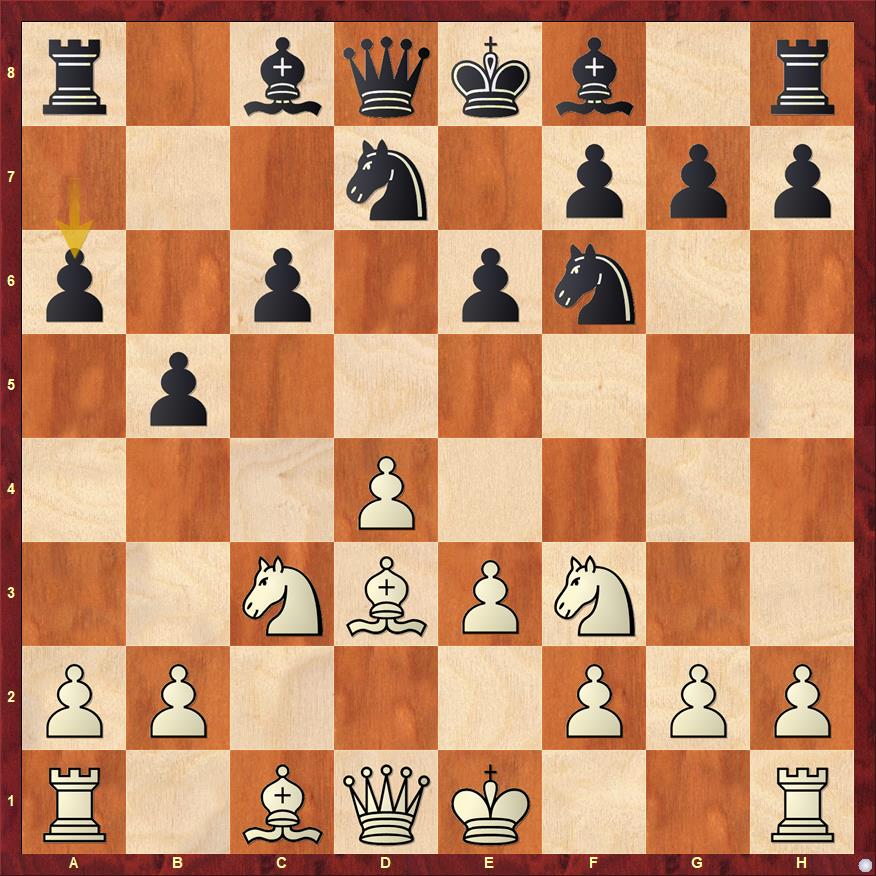
Ding revives the line that Anand used in the 2008 Bonn Match to famously defeat the recently retired legend of the game Vladimir Kramnik twice! As Nielsen explains in his excellent DVD on the Semi Slav, this line has gone out of fashion due to 8…Bb7 providing a more complex game and mutual chances. The line played by David in the game is the reason why 8…a6 isn’t seen much in tournament play now.
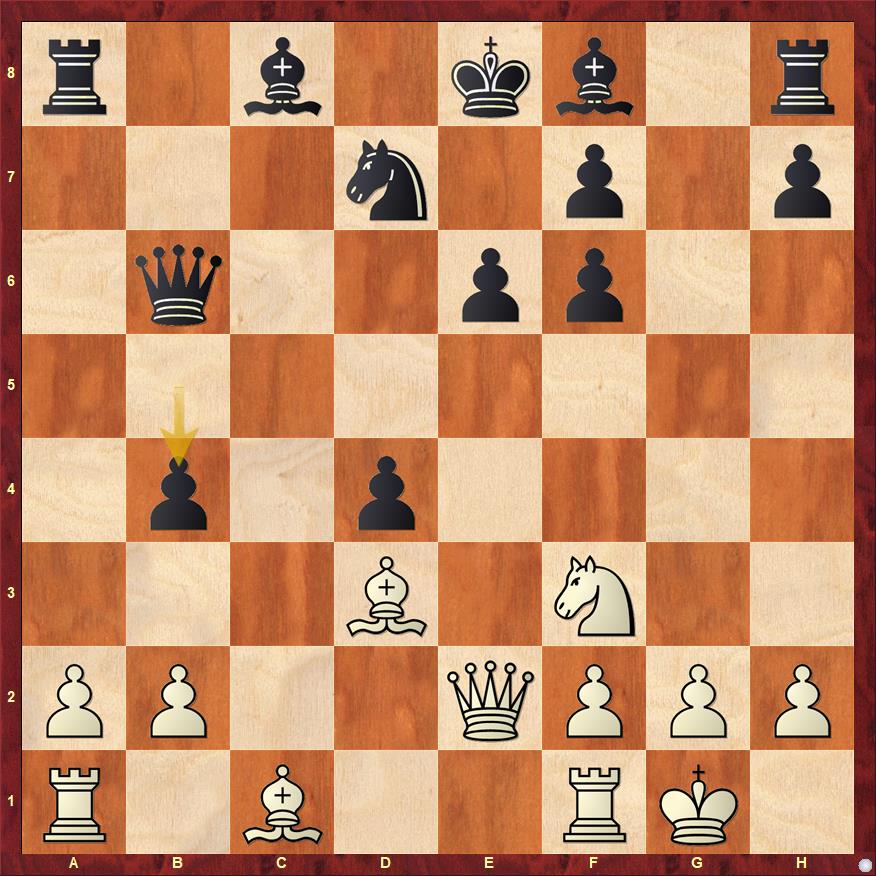
An interesting choice by Ding, eschewing the chance to go into Anand’s Bb7 played against Kramnik in Bonn. The theory in the Semi Slav is really dense and full of rich possibilities. Since I’m not an authority in the subject, I won’t go into the subject too deeply. All I can say about the current position is that White has numerous ways to play for a small advantage, but all of them give Black counterplay. This explains Navara’s decision in the game.
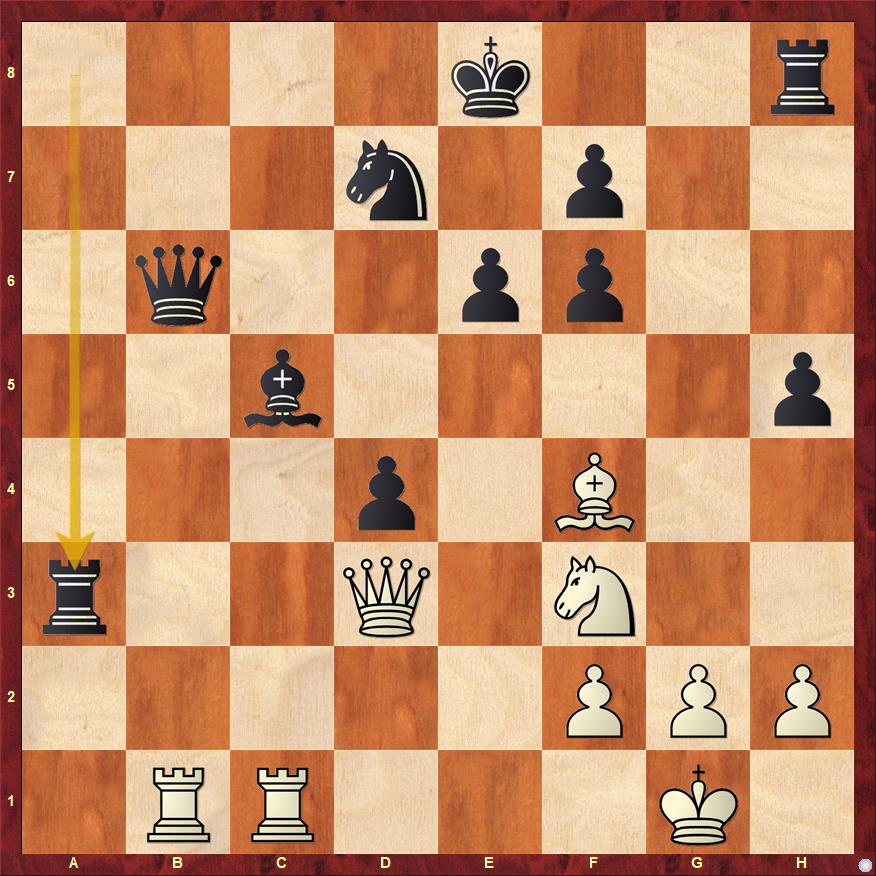
Rxa3 by Ding here is a natural novelty, grabbing a second pawn but sacrificing the exchange for two pawns and a d-passer( which is rather deep). Play now goes by force into a strange endgame which in my opinion is easier for White to play. Use this position as a calculation exercise. What is the best way for White to continue? The answer is present in the game fragment below. Mind you, there are some subtleties along the way, so be careful! The rest of the game is analysed below.
Carlsen-Mamedyarov:
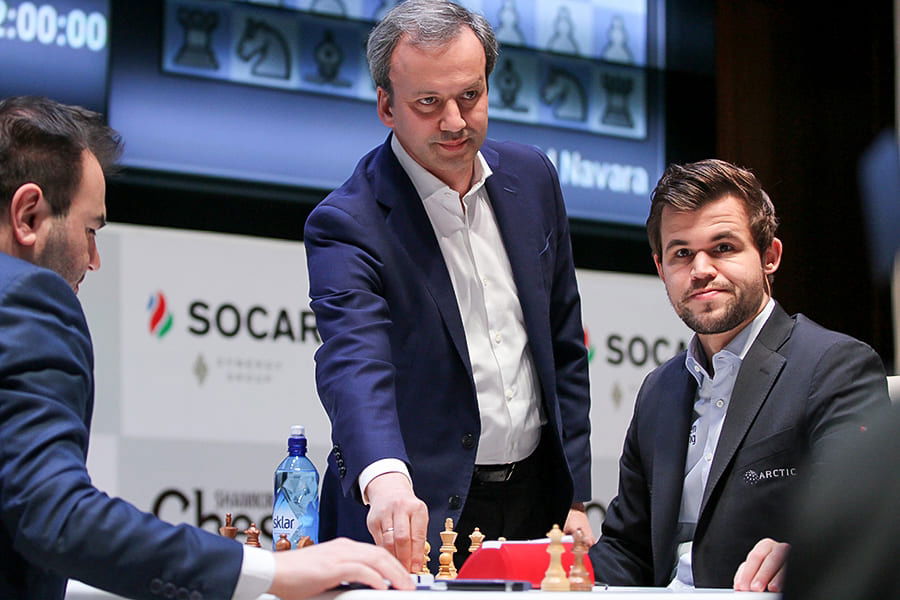
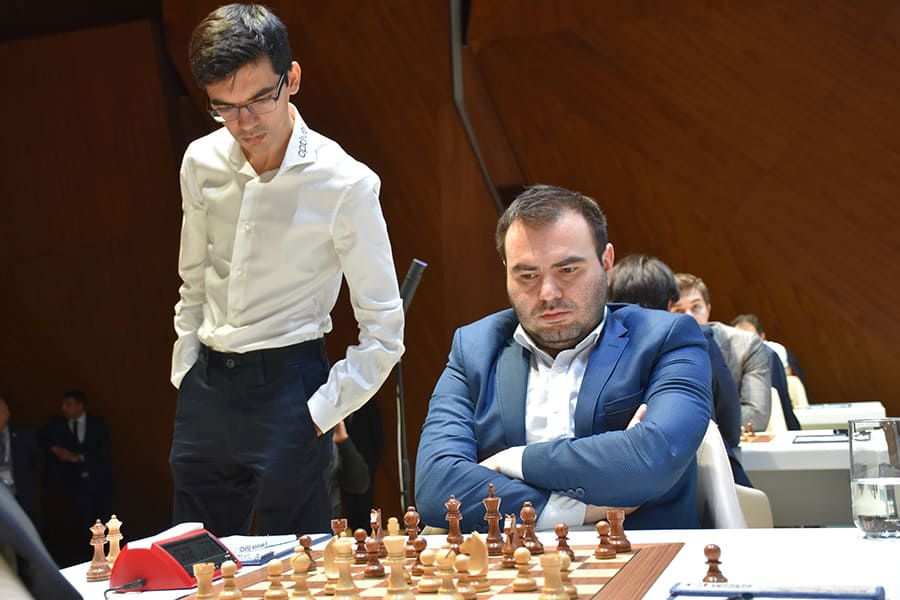
The tournament leader’s game started off as a Tarrasch, a rare guest in top level chess. Shak refused to take on an isolated pawn and instead pushed c4, taking the game into the contours of a reversed Panov Attack. On his part, Magnus immediately broke on the queenside with b3 and in my opinion had the easier position and reason to play for the win. However, Shak neutralised the World Champion’s attempts rather easily, and a draw was agreed on move 37. There was a critical moment that could have had a deeper impact on the game:
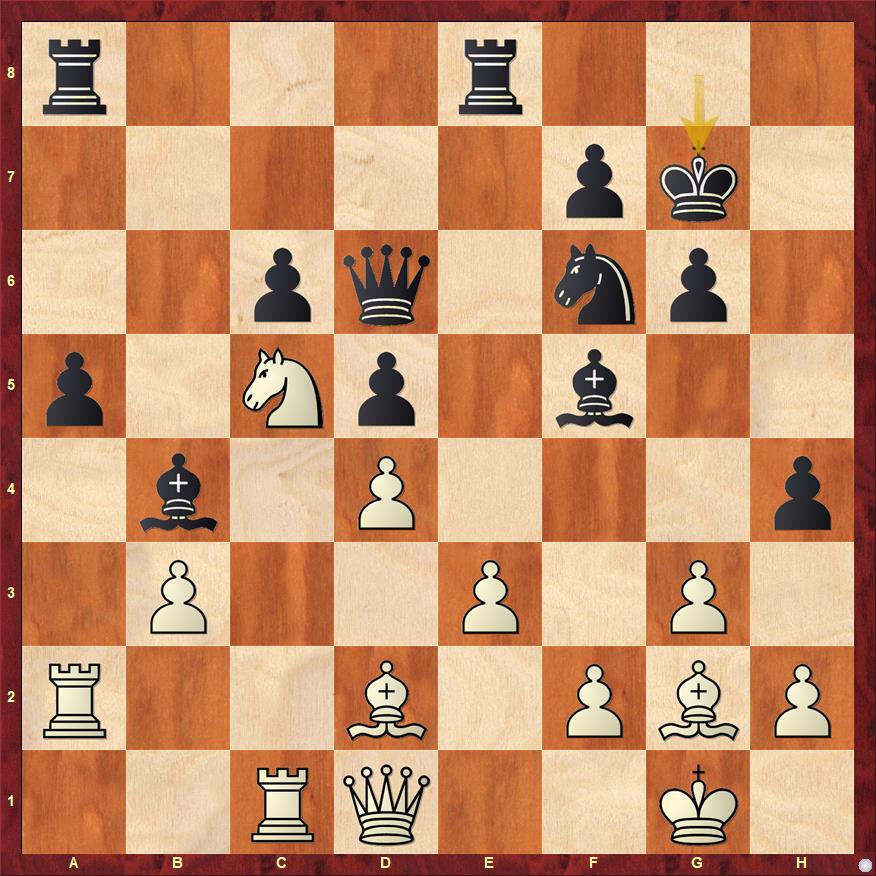
I am sure both players were in preparation till at least move 30, but a while earlier after move 20 Magnus had an interesting option available to him. Instead of the move 21.Bxb4 that portrays peaceful intentions, Magnus could have tried Rca1!? here. My point is that in this position, the a5 pawn is easier to attack than the b3 pawn, and that should give White a little something here. Sure, Black has organised some counterplay on the kingside, but with a fianchettoed position White’s king is usually safe as long as he has his Bishop for company. The advantage is slight after my suggestion, and it should be taken as a serious alternative to the vacuuming operation the World Champion undertook in the game.Magnus draws his third game of the tournament and continues to lead alone.
Radjabov-Karjakin:
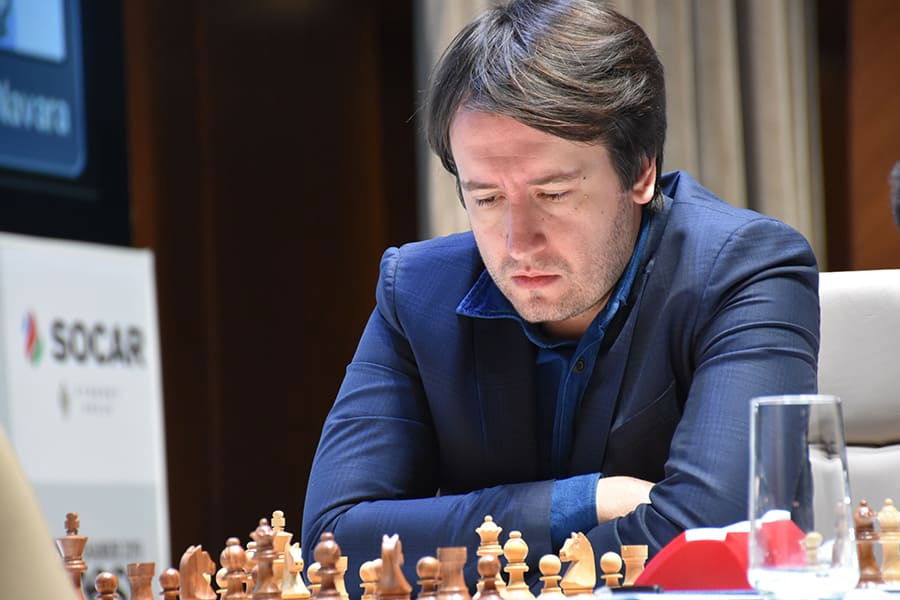
Teimour Radjabov got no real advantage with the white pieces
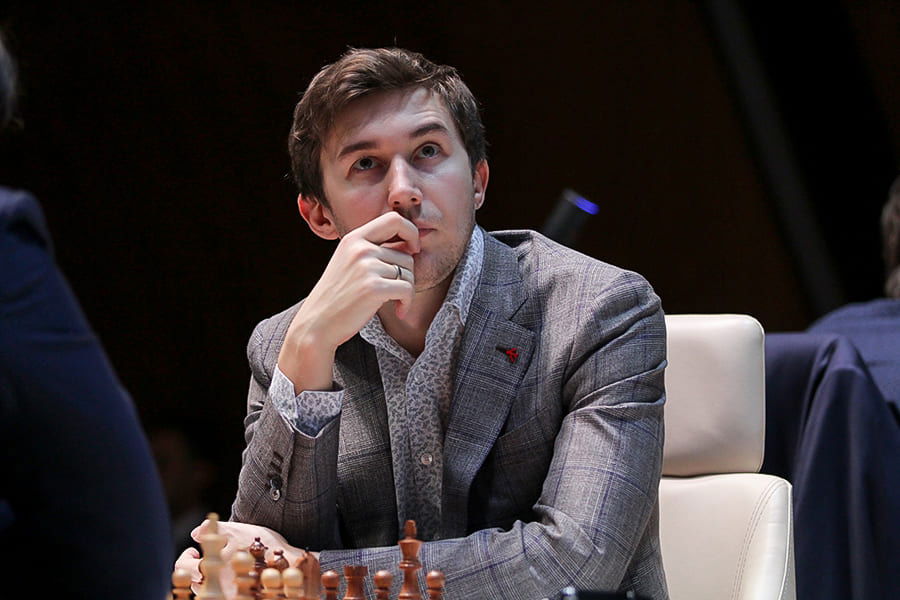
The game started as a Reti, but quickly transposed to a weird Catalan structure, where Sergey had played c6 instead of a6 to counter Radjabov’s pressure on the c-file, which was real considering the knight was still sitting on b1. Radjabov managed to prevent c5 for a long time, but Sergey found an alternative, taking the knight on e5 and quickly breaking in the center with f6 and e5. White sacrificed a pawn soon after to open up some queenside files and put some pressure on the locked up black bishop. Sergey eventually returned the pawn to rid himself of some pressure, and the game petered out to a draw. There was one critical moment where White could have increased the pressure:

In this late middlegame, White has considerable pressure due to his active pieces and Black’s weak queenside. Here Radjabov liquidated with Ra1 (?!).While it would be too harsh to call it a mistake, it definitely is a minor inaccuracy and portrays a safety-first approach after an enterprising pawn sacrifice. Here Be4! Or Bf3! maintain White’s stable advantage and initiative, and could have given Teimour greater chances of converting his advantage. Instead, all that happened was mass liquidation and a draw agreement just after move 40.
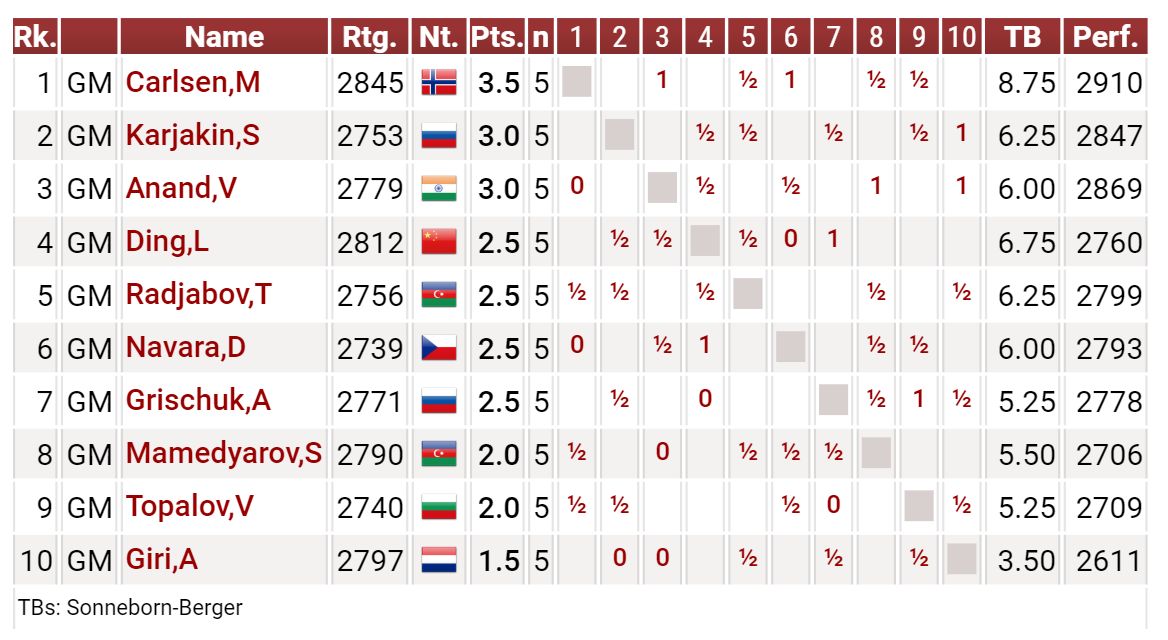
About the author:
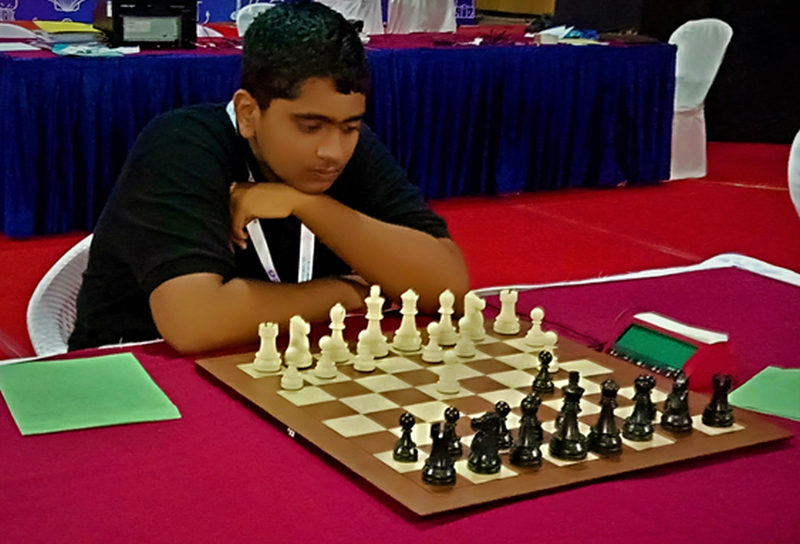
Tanmay Srinath is an 18-year-old chess player from Bangalore, Karnataka, currently pursuing both chess and engineering at BMSCE Bangalore. Tanmay is also a Taekwondo Black Belt, who has represented the country in an International Tournament in Thailand. He is a big fan of Mikhail Tal and Vishy Anand, and sincerely believes in doing his bit to Power Chess in India!












